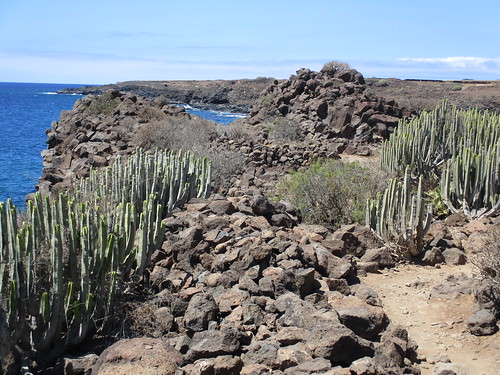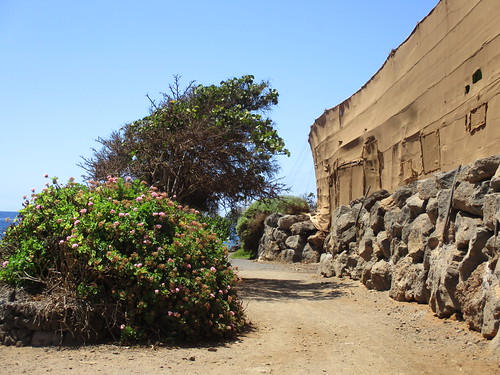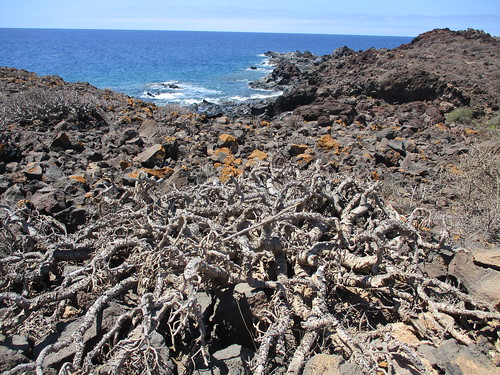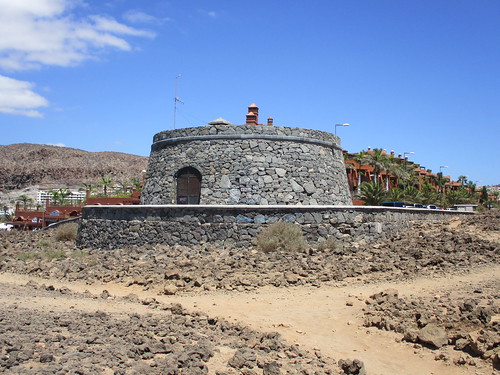

Candy striped and 167 feet tall, the most modern of two lighthouses can be seen from Los Cristianos beach in the south of Tenerife. Answering its call with two friends, we uncovered the harsh but beautiful coastal history of lava fields, salt production, and moody seas. Malpais de la Rasca is the protected cultural heritage site but we started out at the fishing village of Las Galletas. Freak waves had punched a gaping hole in the beach promenade, a reminder that this stretch of twinkling blue sea could pack a punch anytime it chose to. The modern marina soon faded as small coves and crunching shingle led us through tall spikey cardones plants. Rock pools abounded as a meandering path climbed and dipped. Shade arrived alongside huge plantations of bananas that looked enough to feed an army of monkeys.




A notice and the rearing tower of the 1978 built lighthouse announced the entrance to the malpais (badlands). Dried pools harked back to the days when sea salt was harvested from the waves that buffeted the coast. There were other welcome uses for these small puddles of water. Tabaiba plants sprout in clusters around the lava field, the toxic armaga variety sprinkled in a pool would induce a drunk like state making the delirious fush easy to grab.



The squat buildings near the sea beacon are from the 1898 original lighthouse, built from stone quarried from Guaza mountain were for the lighthouse keepers family, and the lamp room which needed lighting by hand from acetylene gas. There was no such burden on our visit, just a few young sun bathers on the nearby outcrops of rock, oblivious to the daily dramas that used to play out as ships were kept well away from the rocks.




Pushing on into the lava fields, we followed an uneven surface a few yards back from the sea. It must have been a slow and uncomfortable procession for herders, cattle, and traders. Some of the old stone huts (goros) still remain at least in part, they would have provided welcome relief from unexpected turns in the weather and any accidents on slippy surfaces. In recent years people have built illegal shacks on the protected zone, a few weeks before our visit a big clean up removed 1,335 kilos of rubbish. that doesn´t mean it´s lifeless out there, some 40 species of reptile call the area home.



Guaza mountain and the modern developments of Palm Mar steered us past the old protective fort and onto even roads to a small promenade. Familiar landmarks over in Los Cristianos looked enticingly close but its a choice of a steep up and over the mountain or our chosen route up the main street of Palm Mar to the busy bus road back into Los Cristianos. The mountain is worthy of a dedicated walk in its own right with a track up the spine to the radio mast park at the peak. A few bars in Palm Mar ensured we cot some cooling liquids after a hot 2.5 hour stroll. Rasca is a taste of tradition and a connection to tougher times.